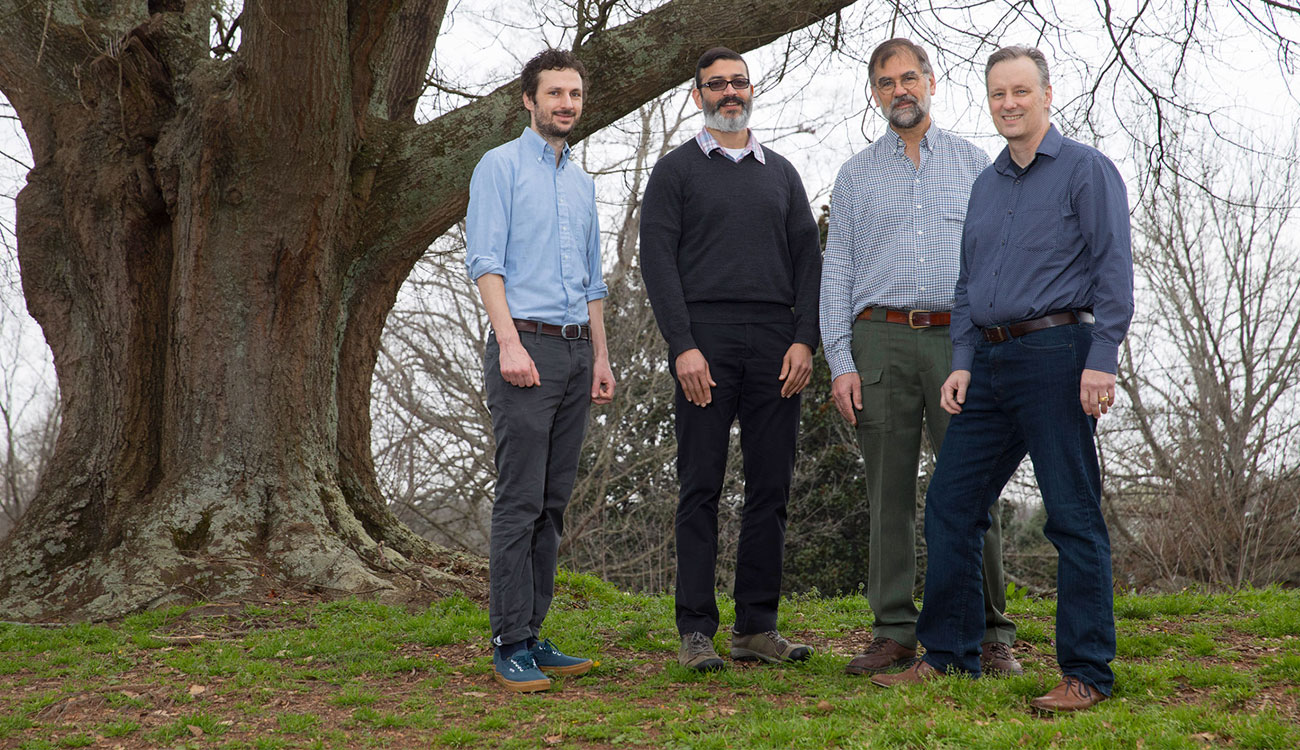Aging baby boomers are driving the graying of America.
For the first time in U.S. history, the Census Bureau projects that by 2035 seniors will outnumber children. And as the shift of population grays, a dark cloud of uncertainty over rising healthcare costs looms in the distance.
Healthcare spending is projected to accelerate over the next decade, and a RAND study found that 60 percent of American adults now live with at least one chronic condition. Chronic diseases, such as asthma, cancer, diabetes and heart disease, cost Georgia approximately $40 billion each year, according to the Georgia Department of Public Health.
Steven Stice, GRA Eminent Scholar of Regenerative Medicine at the University of Georgia, believes one solution to combat the cost of chronic disease is producing cell-based therapies—products designed to cure and promote self healing—in much larger quantities and more consistent quality.
And Stice is not alone.
Over the next five years, Stice will lead UGA researchers from the College of Agricultural & Environmental Sciences Regenerative Bioscience Center as they work to transform the manufacturing of cell-based therapeutics. The UGA team is working closely with a multidisciplinary consortium, called the Center for Cell Manufacturing Technologies, or CMaT, backed by the National Science Foundation.
The CMaT research consortium, consisting of more than 100 members working in universities, industry and government agencies, is headquartered in Atlanta at Georgia Tech, as part of the Marcus Center for Therapeutic Cell Characterization and Manufacturing.
The collaboration between scientists, researchers and manufacturers is centered on discovering lifetime cures for escalating chronic diseases and bringing them to patients. These types of curative therapies have the potential to keep populations healthier longer and reduce the cost of healthcare.
Living Cell Therapies
Cell-based therapies or “living therapies” have the potential to cure disease, where most drug therapies only treat symptoms. For example, CAR-T cells, short for chimeric antigen receptor T cells, are removed and modified from a patient’s own immune system. Once lab modified, the collected cells are placed back in the body to detect and kill cancer cells.
But the entire process can take weeks to complete, and that’s not the only obstacle.
“CAR T-cell therapy is expensive, and treatment is specific to each individual. Today’s process is one patient, one batch,” says Stice.
That’s why CMaT researchers are working to make this effective treatment more efficient, so thousands can benefit from a batch.
“Large-scale manufacturing of therapeutic cells has the potential to benefit millions,” says Art Edison, GRA Eminent Scholar and professor of biochemistry and molecular biology, genetics and the Institute of Bioinformatics. “Ultimately, we hope to take our cell technology to production, with a goal of making them readily available to all.”
Retraining cells
Currently, there are three CAR T-cell therapies approved for use in the U.S.. They all treat blood cancers. UGA researchers hope to uncover ways that CAR-T cells can tackle not just blood cancers but also solid tumors, like those present in brain, breast, prostate and ovarian cancers. One path they’re evaluating is blood vessels.
For a solid tumor to grow, it recruits blood vessels to bring in nutrients and oxygen. Once stimulated by the growth of possibly hundreds of blood vessels, it can rapidly grow bigger. However blood vessel recruits that feed tumors are abnormal and have leaky walls, meaning they have gaps. UGA researchers are investigating ways by which CAR T-cells use these gaps to penetrate and influence tumor growth.
“Together with Leidong Mao’s lab, we are developing in vitro methods to visualize CAR-T cell killing of brain tumor cells in real time,” said Lohitash Karumbaiah, associate professor in UGA’s College of Agricultural and Environmental Sciences, who is working with Stice on a similar approaches to treat brain injuries.
“By bonding together around a common goal and CMaT’s cross-institutional investments, we will have a greater impact on the development and the prosperity of each other’s local economies, as well as that of the state of Georgia.”
– Steven Stice, Director of Regenerative Bioscience Center
Expanding Our Role in Economic Development
The CMaT partnership not only offers hope of new therapy and cures, it also provides Georgia an opportunity to become the next big biotech hub for jobs.
“The state of Georgia is becoming heavily invested in the idea of cell therapeutics and cell manufacturing, and Atlanta is on the cusp of becoming a biotech city,” says Luke Mortensen, an assistant professor of regenerative medicine and engineering in CAES and the College of Engineering, who spent three years at Harvard Medical School studying imaging applications in regenerative medicine in the greater Boston area, a biotech capital of the world that hosts over 1,000 biotechnology-related companies.
UGA, ranked No. 1 in bringing new products to the market, is uniquely positioned to fill the need of early stage biotechs.
“For the next-generation biotech entrepreneur, Georgia holds many advantages—from a rising technological metropolis and a highly trained workforce, to the state’s desire to provide tools and resources—making Georgia a competitive advantage from any new company standpoint,” said Mortensen.
CMaT is building on UGA’s commitment to fostering innovation and economic development. The partnership shows promise in translating research into products and jobs with industry partnerships ranging from large life science companies, such as ThermoFisher Scientific and Celgene, to small start-ups businesses, like Vicapsys.
“By bonding together around a common goal and CMaT’s cross-institutional investments,” Stice says, “we will have a greater impact on the development and the prosperity of each other’s local economies, as well as that of the state of Georgia.”

About the Researcher
Steven Stice
GRA Eminent Scholar and D.W. Brooks Distinguished Professor
College of Agricultural & Environmental Sciences
Director, Regenerative Bioscience Center






